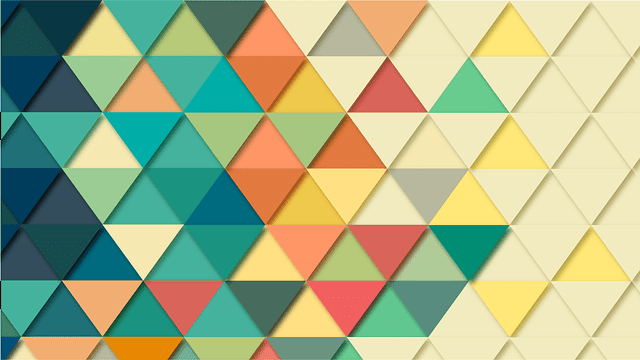
Circles are everywhere! That’s why I created this Circle Calculator Online with a video on why to learn about circle geometry. From the wheels of a bicycle to the face of a clock, circles are an integral part of our daily lives. Circle geometry is an exciting and practical topic that students should learn. Understanding the area, circumference, diameter, and radius of circles can enhance problem-solving skills and open up a world of applications in various fields. By exploring circle geometry, students gain valuable knowledge that will benefit them in their daily lives and future careers.
Circle Calculator Online Way!
Circle calculator online is created based on geometrical principles. You can compute the area ,diameter, radius and circumference of a circle by inputting any of these .
This web calculator is created through a SaaS platform for Web Calculators from Google Sheet . Please give feedback to improve it.
What is a circle?
A circle is a two-dimensional geometric shape consisting of all points in a plane that are equidistant from a given point, known as the center. The distance from the center to any point on the circle is called the radius.
What are Circle components?
Center: The fixed point from which all points on the circle are equidistant.
- Radius (r): The distance from the center to any point on the circle.
- Diameter (d): The distance across the circle through the center, equal to twice the radius (d = 2r).
- Circumference (C): The distance around the circle or the perimeter of the circle.
- Area (A): The space enclosed within the circle.
How to calculate the area of a circle
The area of a circle (A) can be found using the formula:
A = πr^2
where π (pi) is a mathematical constant approximately equal to 3.14159 and r is the radius of the circle.
Example: Find the area of a circle with a radius of 5 cm.
A = π(5)^2 A ≈ 3.14159 × 25 A ≈ 78.54 square centimeters
How to calculate the circumference of a circle?
The circumference of a circle (C) can be found using the formula:
C = 2πr
where r is the radius of the circle.
Example: Find the circumference of a circle with a radius of 5 cm.
C = 2π(5) C ≈ 2 × 3.14159 × 5 C ≈ 31.42 centimeters
Real-Life Applications of Circle Geometry
Understanding circle geometry is crucial for various real-life situations. By exploring real-life applications and advanced circle concepts, you’ll continue to develop a deeper understanding of circle geometry. Here are a few examples of real life application of Circle geometry concepts:
Architecture and Engineering
The design of domes, tunnels, and arches often involves circles. Calculating the area and circumference helps engineers determine the amount of material needed, the structural stability, and the aesthetics of the design.
Sports
In sports like soccer, cricket, and discus throw, the playing field’s dimensions involve circles or arcs. Understanding circle geometry helps players strategize and navigate the field effectively.
Arts and Crafts
When designing patterns or creating art, circles play a significant role. Knowing how to calculate the area, circumference, and other circle properties can aid artists in creating visually appealing and symmetrical designs.
Navigation
Circular measurements, such as bearings and angles, are essential in navigation. Pilots and sailors use circle geometry to calculate distances, directions, and the shortest routes.
Medicine
In medical imaging, such as CT scans and MRIs, circles and arcs are used to create cross-sectional images of the body. These images help doctors diagnose and treat various conditions.
Astronomy
The orbits of celestial bodies, such as planets and moons, are often modeled as circles or ellipses. Circle geometry helps astronomers calculate distances, velocities, and the positions of these celestial bodies over time.
Manufacturing
Many industrial processes, like cutting materials into circular shapes or creating circular components, require a solid understanding of circle geometry. This knowledge ensures that the components are produced accurately and efficiently.
Graphic Design
Circles are frequently used in graphic design for creating logos, icons, and other visual elements. Designers use circle geometry to maintain proper proportions and spacing, resulting in aesthetically pleasing and professional designs.
Music
In music theory, the circle of fifths is a visual representation of the relationships between the 12 tones of the chromatic scale. This circular arrangement helps musicians understand key signatures, chord progressions, and harmonic relationships.
By exploring real-life applications and advanced circle concepts, you’ll continue to develop a deeper understanding of circle geometry. As you progress in your studies, always remember to apply your knowledge and think critically about how these concepts relate to the world around you. Embrace the challenge and enjoy the journey of learning and discovery! Also test circle calculator online !
Tips and Tricks for Solving Circle Geometry Problems
1. Trick to Convert between diameter and radius
Remember that the diameter is twice the length of the radius (d = 2r). You can use this relationship to easily convert between the two measurements when solving problems.
Example: If the diameter of a circle is 8 cm, what is its radius?
Radius (r) = Diameter (d) / 2 r = 8 / 2 r = 4 cm
Estimating area and circumference with π
For quick estimations, you can use the approximation of π as 3.14 or 22/7. This will make calculations easier and give you a reasonably accurate result. However, for more precise answers, use the more accurate value of π (3.14159).
Challenging Circle Geometry Questions
Now that you have a good understanding of circle geometry, try solving these challenging problems:
Problem 1
A circular garden has a diameter of 12 meters. Calculate the garden’s area and the length of the fencing required to enclose it.
Solution
The diameter of the circular garden is given as 12 meters. We can use this to find the radius of the garden:
Radius = Diameter / 2 = 12 / 2 = 6 meters
Now, we can use the formula for the area of a circle:
Area = πr^2
where π is approximately equal to 3.14.
Substituting the value of the radius, we get:
Area = 3.14 x 6^2 = 113.04 square meters
Therefore, the area of the circular garden is 113.04 square meters.
Next, we need to find the length of the fencing required to enclose the garden. This is the circumference of the circle, which is given by the formula:
Circumference = 2πr
Substituting the value of the radius, we get:
Circumference = 2 x 3.14 x 6 = 37.68 meters
Therefore, the length of the fencing required to enclose the garden is 37.68 meters.
So, the area of the garden is 113.04 square meters and the length of the fencing required to enclose it is 37.68 meters.Problem 2
A wheel on a bicycle has a radius of 35 centimeters. How many times does the wheel rotate when the bicycle travels 1 kilometer?
Solution to the Problem
To solve this problem, we need to use the formula for the circumference of a circle, which is:
Circumference = 2πr
where r is the radius of the circle, and π is approximately equal to 3.14.
In this problem, the radius of the wheel is given as 35 centimeters. We can use this to find the circumference of the wheel:
Circumference = 2 x 3.14 x 35 = 219.8 centimeters
Now, we need to find out how many times the wheel rotates when the bicycle travels 1 kilometer. One kilometer is equal to 1000 meters. We can convert this to centimeters by multiplying by 100:
1000 meters x 100 = 100000 centimeters
We can now use the circumference of the wheel to find out how many times it rotates when the bicycle travels 1 kilometer:
Number of rotations = Distance traveled / Circumference
Number of rotations = 100000 / 219.8
Number of rotations ≈ 454.54
Therefore, the wheel on the bicycle rotates approximately 454.54 times when the bicycle travels 1 kilometer.Problem 3
A pizza has a diameter of 40 centimeters, and its crust occupies a 5-centimeter-wide circular ring around the edge. Calculate the area of the crust.
Solution to the Problem
The diameter of the pizza is given as 40 centimeters. We can use this to find the radius of the pizza:
Radius = Diameter / 2 = 40 / 2 = 20 centimeters
The crust of the pizza is 5 centimeters wide, which means that the inner radius of the crust is:
Inner radius = Radius - 5 = 20 - 5 = 15 centimeters
The area of the crust can be found by subtracting the area of the pizza without the crust from the area of the whole pizza. The area of the pizza without the crust is the area of a circle with a radius of 15 centimeters, which is:
Area without crust = πr^2 = π x 15^2 ≈ 706.86 square centimeters
The area of the whole pizza is the area of a circle with a radius of 20 centimeters, which is:
Area of pizza = πr^2 = π x 20^2 ≈ 1256.64 square centimeters
Therefore, the area of the crust is:
Area of crust = Area of pizza - Area without crust
Area of crust = 1256.64 - 706.86 ≈ 549.78 square centimeters
Therefore, the area of the crust of the pizza is approximately 549.78 square centimeters.In conclusion, mastering circle geometry is not only enjoyable but also immensely beneficial. Understanding the area, circumference, diameter, and radius of circles allows students to solve real-world problems and excel in various fields. By continuously practicing and applying these concepts, you’ll develop essential problem-solving skills and broaden your understanding of the world around you.
Advanced Circle Concepts

As you progress in your studies, you will encounter more advanced circle concepts and vocabulary. Here are a few terms and ideas to be aware of:
Arc
An arc is a portion of the circumference of a circle. It is often used to describe a curved path between two points on a circle.
Chord
A chord is a straight line segment that connects two points on the circle. The diameter is the longest possible chord in a circle, as it passes through the center.
Sector
A sector is a region of a circle enclosed by two radii and an arc. It resembles a “slice” of a circular pie or pizza.
Segment
A segment is a part of a circle that is enclosed by a chord and an arc. It is the area between a chord and the corresponding arc.
Central angle
A central angle is an angle formed by two radii that connect the center of a circle to two points on its circumference. The measure of a central angle is directly related to the length of the arc it subtends.
Hope you liked Circle Calculator Online explanations and tutorials. If yes, share with your friends and others .You can also test Horizontal Tank Volume calculator and Pythagorus Theorem